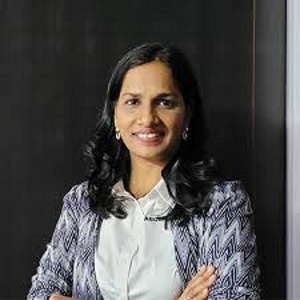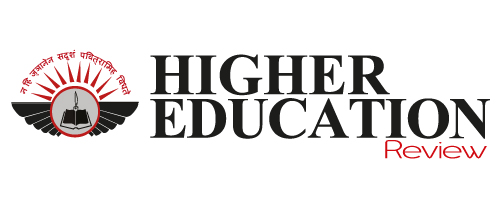Mastering Workplace Readiness in Today's Competitive Landscape

Sangeeta Shetty, Associate Vice President, Ascendion in a recent interaction with Higher Education Review magazine has shared her views on how organizations can ensure their workforce is adaptable to rapid changes in technology and market demands, some effective ways companies can foster a culture of continuous learning among their workforce and more.
Sangeeta Shetty is an experienced HR professional with two decades in the IT industry. She specializes in building people capability, driving organizational culture, and enabling growth. Her expertise spans multi-client environments, start-ups, and global matrix setups across ITES, combining strategic insight with hands-on experience in human capital development.
In today's fast evolving workplace, how can organisations ensure their workforce is adaptable to rapid changes in technology and market demands?
Today people like to align to the organisation charter and be part of making too, therefore, it is very important for an organisation that aims to get their workforce adapt to the technological needs, be extremely transparent about its organization, goal, and vision as well as how it aims to achieve with actions. In other words, when leaders communicate or set goals for the organization, the focus on new technology, intent to stay competitive, align with market, be the market leader and how everyone in the organization plays a part in achieving that gets important.
Specific interventions that help people develop a growth mindset, communications reiterating the same, emphasizing on mentoring, learning as a culture, encouraging people to experiment, and try new approaches to problems and solutions, without fearing the risk of failing are instrumental.
Given the current trends and shifting market with technological demands, it is crucial for organizations to establish an internal ecosystem that aligns with the dynamic and ever changing external world. This not only includes celebrating small steps towards innovation but facilitating more avenues for knowledge sharing that ensures consistency in action and speech.
In a same vein, it needs to be evident in the kind of deals we bring home for engineers to deliver. I am aware of organizations who have expanded over time, started out as large in number of Full-time employees but their projects solutions and services may not be as ambitious on the ground as their vision and purpose. This could be still the case, but if effort stays in the right direction companies will be see merits of staying focussed.
Under the guise of AI or solutions, organisations may tend to fit in with some fundamental integration efforts. Therefore, imperative for organizations to stay strongly committed across all domains and functions to secure projects that have the potential to utilize cutting-edge technology.
It is often said to be top-down approach but co existing with real behaviours and actions on the ground does the magic.
Upskilling and reskilling are crucial for remaining competitive in today's job market. What are some effective ways companies can foster a culture of continuous learning among their workforce?
With the fourth industrial revolution that is defined by AI, machine learning and automation, which has drastically altered the job landscape. Even the most successful businesses may struggle to keep up with the demands of its clients. In attempt to recruit something that a client needs or surviving with perhaps outdated resources may make this seem like a firefighting situation on the ground. Therefore, reskilling and up skilling are no longer desirable, but they are a growth plan.
Additionally, performing reskilling and upskilling in batches for specific group may change as an approach; learning continuously with parallel and constant effort across could be pressing necessity for all pockets. By the time you complete one phase, the syllabus and technologies have most likely changed, and you may need to catch up even more. Likewise, specific to AI/ ML it is being relevant in every function therefore consumption and awareness to be encouraged across the organisation.
Everyone should have a basic understanding of Gen AI and its technologies, whether they are engineers, enabling personnel, or working in L&D. I have been interacting with people in the industry, and I have noticed that many of them may still be at the stage where they are yet skeptical of AI posing security risk and threat, which interestingly has been a debate point too, either be the case, more compelling need for early awareness on the subject.
The concept of artificial intelligence is currently not well understood. To effectively advance to the next stage of evolution, organizations will need to increase their own employees' familiarity with some of these phrases.
That said, it cannot be the legacy approach or classroom training. Technical certifications existed as a popular channel to upgrade, tools and mechanisms have further evolved there is always the next version before you are done with the former. It must therefore be continuous; you cannot rely on it or get ready for a subsequent certification stage. The microlearning and bitesized lessons would aid individuals in assimilating the information daily.
Making it self-driven and establishing the ecosystem are two crucial components that enable them to work together and share knowledge. There are numerous intricate projects that are very technical and demanding and we too have technically proficient individuals managing them within the setup, rich knowledge and experience that coexist; we should be able to leverage it optimally.
We see community learning as a culture and it is evolving, and we are already witnessing how community groups get together and learn and how much they love it.
Diversity and inclusion have become fundamental to workplace readiness. So how can organisations ensure that their readiness programmes are inclusive and equitable for all employees?
Organization’s emphasis, and what is portrayed on the ground are all crucial in demonstrating the organization's values and gaining trust.
From the highest level to the lowest, it's critical that we all speak the same language when discussing DEI. Additionally, it's critical to be clear and concentrate on specific tasks in order to phase ourselves or accomplish the overall goal, but be sure of the focus area
Once agreed, everyone must carry that as one of the goals, and it must be reflected in all aspects, including hiring, retaining, and building, as well as in the processes, functions, and department. It must be reflected in the fundamental structure of the programs, such as hiring trainers from a variety of backgrounds, modifying the content to speak to particular or varied groups, and offering formats that are easily accessible.
Above all, it necessitates the dedication of leaders, the design and charter, and the way different facets adopt it. Adopting DEI requires a lot of work to get everyone on the same page.
It is crucial to encourage people to think about how DEI as a subject is significant towards the organizational objectives and to help them come to a consensus through some of these unconscious bias trainings, seminars, or webinars, modifying learning pathways, using inclusive hiring and selection practices to foster accountability and offer feedback, and maintaining open lines of communication regarding the topic. Some of these ERGs are also coming helpful in people finding themselves in the safe place.

